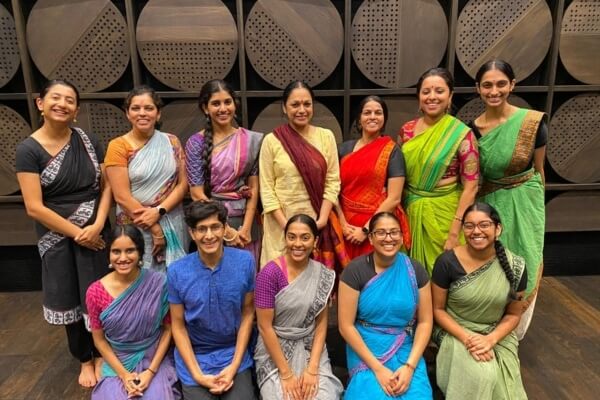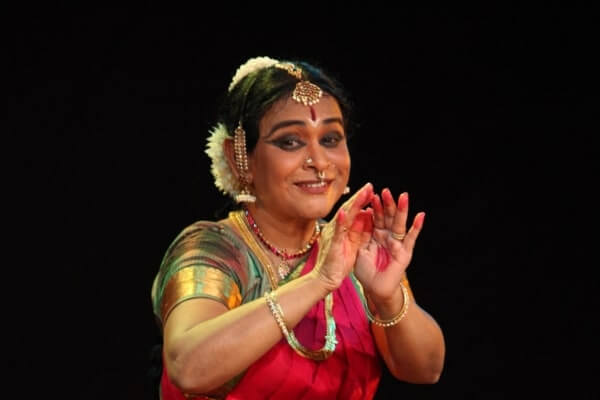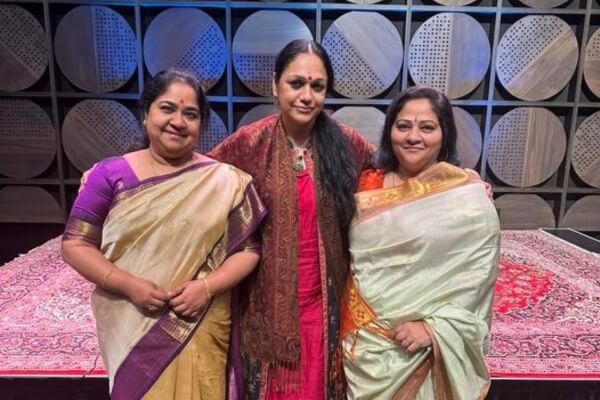The Indian Performing Arts Convention (IPAC) returned to Melbourne this year (from 18 – 26 May) for a celebration of Carnatic music and Bharatanatyam. It is an annual festival of creativity with performances, collaborations and talks by acclaimed musicians and dancers from India, Singapore and Australia with a focus on cultivating a new generation of artistes and creating new work in Indian classical dance and music.
It was the brainchild of Singapore-based Apsaras Arts’s Aravinth Kumarasamy who set it in motion in Singapore in 2012 in order to inspire practising artistes in the Asia Pacific region.
IPAC launched its Australian edition in 2021 in Melbourne, featuring internationally acclaimed practitioners in music, dance and arts research. It began as a collaboration between Apsaras Arts and Melbourne’s own Academy of Indian Music – and supported by Monash Performing Arts Centre (MPAC) – especially Tom Gutteridge, now being supported by the Indian Consulate in Melbourne and Swami Vivekananda Cultural Centre.
The convention this year included Master Classes, Work Shops, Lecture Demonstrations, Performances, Residencies – all aimed to provide Australia-based students exposure to the absolute best exponents of the art forms.

The musical segment was led by one of the best contemporary Carnatic vocalists, Dr S Sowmya, leading violinist Lalgudi Vijayalakshmi – who had both mentored budding Carnatic musicians in a week of workshops in Melbourne, culminating in performances on 25 May at the David Li gallery in the Monash University performing arts precinct. The vocal group rendition by 6 students was in the ragam Thodi, followed by a javali in ragam behag. The violin segment consisted of a presentation by 4 students, followed by a solo by Akshayan Manivannan and a vocal solo by Krishna Ramaratnam who were both mentored by the well-known Carnatic artiste Shriramkumar. Mrudangam accompaniment ably provided by the duo Sai Nivaethan and Sai Sarangan Ravichandhira.
The Dance showcase proved to be the more exciting segment of the convention, as it built on the success of the previous years, highlighting the work of Australia’s blossoming Bharatanatyam community. The performances by Melbourne’s budding young dancers were guided and polished by the convention’s resident artistes Rama Vaidyanathan and Bragha Bessell. It had earlier included lec-dems by well-known dancer-choreographers Christopher Guruswamy and Mohanapriyan Thavarajah.

At the Alexander Theatre, Rama Vaidyanathan introduced dancers she had trained over the previous week: the theme was ‘navarasa’ or the nine emotions. Rama V chose a most apt story to render this – from the tenth canto of the Bhagawatam, in which Krishna enters Mathura in order to confront Kamsa and challenge him to a fight. The nine different emotions – expressed by nine different people when they see Krishna – were beautifully depicted by the Melbourne dancers. Another group presented Narayana Teertha’s Krishna Tarangini. Rama Vaidyanathan is one of India’s leading contemporary Bharatanatyam dancers and has trained under the legendary Yamini Krishnamurthy and Saroja Vaidyanathan and a recipient of the Sangeet Natak Akademi Award.
This was followed by an abhinaya item by students who were trained by the dance expert Braga Bessell – a pupil of the legendary Kalanidhi Narayanan, who was one of the most renowned abhinaya exponents. The padam chosen to render this was from Jayadeva’s Ashtapadi.

MPAC also presented a world premiere created and choreographed by emerging Melbourne-based dancer Rukshikaa Elankumaran under the guidance and mentorship of the extraordinary dance icon Priyadarsini Govind. This exciting new work involving seven dancers was developed as part of last year’s IPAC, during an intense one-week in-person conception phase with Priyadarsini, and further refined with online and in-person workshopping leading up to the premiere on 26 May. This was the piece de resistance of the evening. Many years ago, I had attended the very young Rukshika Elankumaran’s arangetram under her mother Meena Elankumaran’s able tutelage. Her performance on May 26 was nothing short of brilliant in every way: not only was the theme she has put together bold and challenging, she – and the dancers who accompanied her – articulated and executed it most competently. Rukshika’s dance was one of the best I have seen in Australia and was a visual treat; her movements were razor sharp and precise, and she exuded a confidence and aura that usually only veteran dancers possess. It was a delight to behold. This writer looks forward to seeing her dance more in the future! In this one repertoire alone, IPAC may have achieved its objective!
Learn more about Apsaras Arts here
READ MORE: Why we need a new kind of Nayika (heroine)





